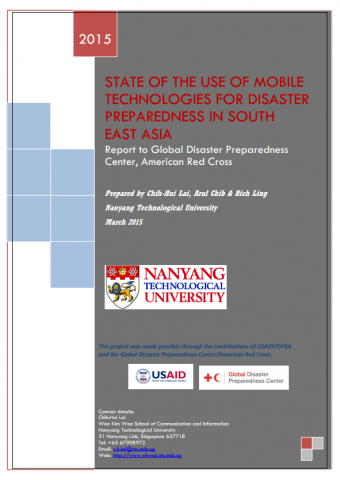State of the Use of Mobile Technologies for Disaster Preparedness in South East Asia


This report summarizes the study conducted by Nanyang Technology University (NTU) in collaboration with the Global Disaster Preparedness Center with support from the USAID-Office of Foreign Disaster Assistance to better understand how new communication and information sharing technologies can enhance risk reduction and preparedness measures.
Unlike post-disaster response and recovery, where humans passively adapt to environmental disruptions with the goal of survival, disaster risk awareness and preparedness entail more efforts from individuals to engage in cognitive and behavioural investments for the extreme events that might or might not happen. A complex set of factors influences these investments, such as individual capacities, social context, technological access, and community environments. By employing a systems approach to obtain comprehensive knowledge about these possible influences, this project answers the important question of how to effectively design and implement disaster awareness and preparedness programs. Most importantly, this project follows a bottom-up approach by researching vulnerable groups‟ needs and preferences and using this knowledge to help them support themselves in strengthening their coping and adaptive capacities to future hazards (Allen, 2006).
